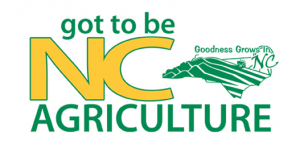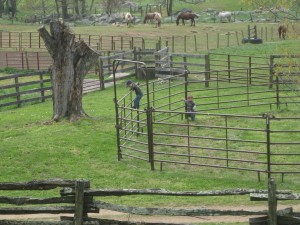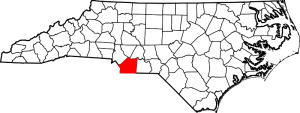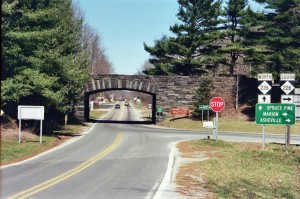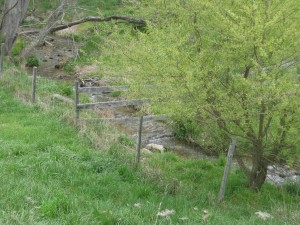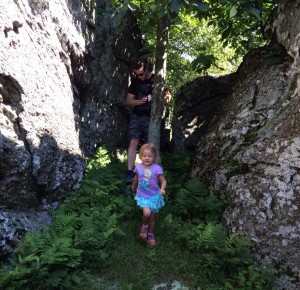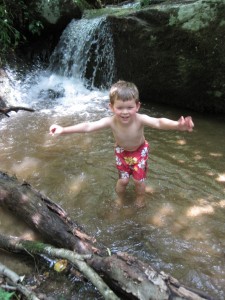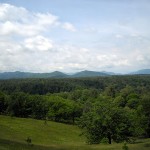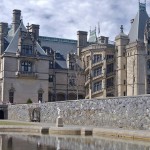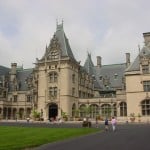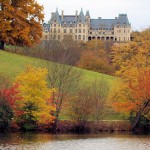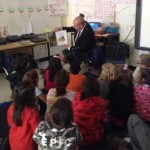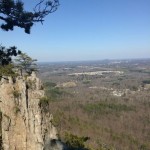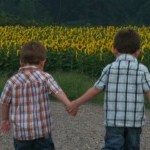 2nd grade students were excited yesterday with the start of International Club. 21 eager students and 3 teachers will travel the world to learn more about Peru, Australia and England. Our first project was to learn how we needed a passport. Then we applied for our passport and got approved to take the 2:45 flight from Charlotte to Peru. We a flight simulator (YouTube) students boarded the plane (chairs in classroom set in rows) and it appeared that we actually were flying. Landing in Lima, Peru students exited the plane and had their passport stamped then reviewed information learned during an earlier presentation at our school about Peru. We learned they speak two languages. The flag is red and white with the crest showing a Llama, cornucopia and chichona tree . The Llama is important to the Inca’s and Peru people for the wool to make clothing. We learned about the city of Lima. We talked about the Incas. We looked at the city from google earth and saw the street view. After that we planned our project of making our own Tunic like the Inca wore. The more colorful the designs are on the cotton tunic the richer the people are. Next week we will take our plans and design our own with glitter glue, fabric, paint and other items. Then we will leave Peru in South America for Australia. How many hours will it take us? Can we go nonstop? How will Australia and Peru be alike and how are they different?
2nd grade students were excited yesterday with the start of International Club. 21 eager students and 3 teachers will travel the world to learn more about Peru, Australia and England. Our first project was to learn how we needed a passport. Then we applied for our passport and got approved to take the 2:45 flight from Charlotte to Peru. We a flight simulator (YouTube) students boarded the plane (chairs in classroom set in rows) and it appeared that we actually were flying. Landing in Lima, Peru students exited the plane and had their passport stamped then reviewed information learned during an earlier presentation at our school about Peru. We learned they speak two languages. The flag is red and white with the crest showing a Llama, cornucopia and chichona tree . The Llama is important to the Inca’s and Peru people for the wool to make clothing. We learned about the city of Lima. We talked about the Incas. We looked at the city from google earth and saw the street view. After that we planned our project of making our own Tunic like the Inca wore. The more colorful the designs are on the cotton tunic the richer the people are. Next week we will take our plans and design our own with glitter glue, fabric, paint and other items. Then we will leave Peru in South America for Australia. How many hours will it take us? Can we go nonstop? How will Australia and Peru be alike and how are they different?
Community/North Carolina
Monroe, North Carolina
North Carolina
USA
Comparing Our Lives- Around the World
We would like to compare your life to ours if you can answer some questions for us. We’ve answered a few for you! We’ll do more later.
- What time does your school begin and end? ( 7:30 a.m.- 2:00 p.m.)
- How many days do you go to school each year? (185 days)
- When does your school start a new school year and end? August 25- June 10
- Do you set down to meals with your family (on weekends and when out of school)? What time do you average doing this? Do you talk or is everybody on cell phones or i-pads or watching TV?
- Do you have a dress code at school or wear uniforms?
- What are some activities you do with your families?
- How much homework do you have each night?
- Do most kids have computer access at home?
- What are some favorite games you play outside?
- Do you travel to other countries for vacation each year? If so where?
- What are some places you like to visit near your home/school?
- Do you have pets? If so what kind? (We learned last week from a video that in Japan their homes are small and they can rent a pet for an hour or a day). We found this interesting.
- Describe your community. Rural, urban, suburban, homes, stores, open spaces, etc.
- We also found it interesting that in several countries people drive on the left side with the steering wheel on the right side. We drive on the right with the steering wheel on the left. We wondered why some countries are different and if it would be hard to adjust. How do most people travel in your community? (bus, train, walking, bike, car, truck)
North Carolina – Agriculture All Around Us
This emblem tells consumers the product is grown in North Carolina and encourages us to buy products locally grown. You can find this a local farmer’s markets.
North Carolina grows many agriculture products because we are located in a diverse climate area with many different types of soil. We have three regions in NC- the Appalachian Mountains, the Piedmont and the Coastal Plains. The coastal plain is next to the Atlantic Ocean. We have growing seasons from 130 days in the very northern mountains to 270 days near the coast.
Those 3 regions vary with their topography, soils and climate. About 2/5 of the state is called Coastal Plain and Tidewater. Another 2/5 is the Piedmont (which is where we live in the Piedmont plateau). To the west of that area is the rolling rugged hills and the areas of the Appalachian Mountains which is home to the Blue Ridge and Great Smokey Mountains and this makes up the last 1/5 of the regions. Asheville is a town in the mountain area and is shown in blue. The highest point is Mount Mitchell at 6,648 feet above sea level. The lowest is where NC meets the Atlantic Ocean sea level in the Coastal area. There are large farms of many acres and smaller family farms across the state. NC has small gardens to larger farms raising food for people to consume and sell. The average farm size is 163 acres and there were 52,400 farms in 2009.
Did you know that NC ranks….
- 1st in the nation for production of flue-cured tobacco and sweet potatoes — there are less farmers growing tobacco these days than in past history when it was a popular product. Sweet potatoes are growing in popularity so more are being harvested each year.
- 2nd in production of Christmas trees. The Fraser Fir is the most popular type grown. 1,300 NC growers produce about 19% of the real Christmas trees in US. It was named for John Fraser, a Scot botanist who explored the southern Appalachian Mountains in the late 18th century. This is another product not for eating but with a great income potential for farmers. It is also second in the nation in production of pigs and hogs with pork as a popular meat dish. NC is known for it’s barbecue pork and chicken dishes.
- 3rd in the production of strawberries and cucumbers. We have a large pickle company called the Mt. Olive Pickle Company, Inc., established in 1926, which produces a full line of quality pickles, peppers and relishes. They sell their products in over 45 states making it the second bestselling brand of pickles in the country. You can go to farms to pick your own strawberries and buy them at local markets.
- 4th in product of upland cotton. Cotton is one of the main crops not totally for eating. Parts of it is used in salad dressings and oils. Mostly it’s used for jeans, shirts and other clothing products. Parts are used to feed animals.
- 5th in peanut production and broilers (chickens for eating). Some people are allergic to peanuts. Many types of peanuts are produced but a large portion of those raised are used as peanuts in the shell. Restaurants often have a bucket on the table for eating before the meal comes.
Other agriculture products in NC include the greenhouse/nursery industry and crops of soybeans, corn, wheat, peanuts, blueberries, potatoes, and tomatoes. We also raise hogs and pigs, turkeys, cattle and calves and chickens (broilers for meat). It is 2nd in the nation in production of pigs and hogs, trout and turkeys and 5th for broilers. We raise chickens for eggs. North Carolina produces a large amounts of sweet potatoes, cucumbers to make pickles, lima beans, turnip greens, collard greens, mustard greens, strawberries, bell peppers, blueberries, Chile peppers, fresh market cucumbers, snap beans, cabbage, eggplant, watermelons, pecans, peaches, squash, apple, and grapes for millions of people in the United States and numerous other countries. North Carolina has become a major producer of trout and catfish with the popularity of eating healthy and eating fish. Throughout the state farmer’s markets set up for the various seasons and sell produce. NC sends other produce to grocery stores and other states and countries.
Union County produces hay, corn, soybeans and wheat as top crops. It is also a large producer of broilers, layers (chickens for eggs), turkeys and cattle. There are about 1,000 farms with about half the total acres being farm land.
Credits: NCAgr.Gov/Ag is Cool
Uniting the World with Learning and UNICEF
 Rocky River students compete and earn points to help support students around the world through UNICEF during the week of October 12th in global studies classes. Several students at Rocky River had a chance to compete in the world’s largest on line educational competition with over 5 million students from around the world. This is a three day event with literacy, math and science competitions. Students can compete with students from many different countries that are on line at the same time. The computer generates a group of 3-5 students for each game. This live completion is called the World Education Games and begins in Australia in the southern hemisphere.
Rocky River students compete and earn points to help support students around the world through UNICEF during the week of October 12th in global studies classes. Several students at Rocky River had a chance to compete in the world’s largest on line educational competition with over 5 million students from around the world. This is a three day event with literacy, math and science competitions. Students can compete with students from many different countries that are on line at the same time. The computer generates a group of 3-5 students for each game. This live completion is called the World Education Games and begins in Australia in the southern hemisphere.
For the literacy competition a sentence will be read aloud and you must spell the missing word. You will earn points for every correct answer. To win the game, race to beat your opponent across the finishing line—but be careful! Three incorrect answers and you are out of the game! The points from the first 20 games will count as the official score on World Literacy Day. In the event of a tie your average speed is important, so be sure to answer quickly!
For Math the game continues until the clock runs down to zero. Continue answering questions to earn points as quickly as possible—but be careful! World Maths Day is about speed and accuracy, three incorrect answers and you are out of the game! The points from your first 20 games will be counted as your official World Maths Day score. (Note: in some parts of the world the word Maths is used instead of Math).
Due to technical difficulties and time students were unable to compete in the science portion on the final day.
 For every 5000 UNICEF points earned by students during the World Education Games, 3P Learning donates $1 towards the supported UNICEF education projects such as Schools in a Box which helps kids continue learning after a disaster (earthquake, flood, and tsunami). This program can get them on track within 72 hours by providing materials for a teacher and her students. The more points earned, the more students they can support! The games are organized by the 3PLearning and sponsored by Microsoft, UNICEF, 3PLearning and MACQUARIE (Australian based). At this time there were 169,474,201 points earned with a final count soon.
For every 5000 UNICEF points earned by students during the World Education Games, 3P Learning donates $1 towards the supported UNICEF education projects such as Schools in a Box which helps kids continue learning after a disaster (earthquake, flood, and tsunami). This program can get them on track within 72 hours by providing materials for a teacher and her students. The more points earned, the more students they can support! The games are organized by the 3PLearning and sponsored by Microsoft, UNICEF, 3PLearning and MACQUARIE (Australian based). At this time there were 169,474,201 points earned with a final count soon.
Rocky River Students Show Global Citizenship and Leadership
During the month of May all 43 classes from Pre-K to 5th grade (860 plus students) joined together with Heifer International to complete a service learning project. During the year we had learned what it means to be a global citizen and that one part of being a global citizen is learning about problems and taking action to help solve them. We focused on hunger and collected money for Heifer International. The animals purchased will go to many places in the world to provide food, wool and money for the family. The money from selling extra eggs, milk, wool, a baby animal will then help families pay for schooling, homes, and needed items in order to make their life better.

Students heard a story about young Beatrice from Uganda, Africa and how her family faced many challenges. After hearing the story Beatrice’s Goat students came up with ways they could earn money to donate. Some of their ideals included a lemonade stand, selling old toys they no longer wanted, doing chores, tooth fairy money, allowances, and gift money. Students made posters to advertise the project and an announcement for our broadcast. Then they went out and found ways they could earn money to donate and take action against world hunger.
Along with individual student donations Girl scout Troop 2906 consisting of Lia, Jada, Liani, Emma, Taylor, Tristan (all 2nd graders) and their leader Mrs. Zarger made this a community project and collected a lot of money.
The student’s and their families were very generous when they donated $548.69 toward hunger and making a better life for others. This extended their learning when they were able to use some of their 7 habits (Leader in Me) strategies and take action to help others around the world so they can show their global citizenship.
We donated an alpaca, goat, sheep, honeybees, ducks/geese, a share of a heifer and a hope basket with (rabbits and chicks). Students discuss where they thought these animals would help out and what it means to have a sustainable living. When you purchase a share of an animal then other money is put with it from other donations toward the purchase.
When it was all done and the money sent to Heifer the students said, “It made me feel really good to help someone out.” “I felt proud of what I did.” “I want to continue helping other people.” “We helped a lot of families.”
We want to thank everyone in the community, students and families that helped with world hunger.
Our Second Visit- Blue Ridge Parkway
http://www.nps.gov/storage/images/blri/Webpages/originals/375.jpg
Blue Ridge Parkway Katherine
The Blue Ridge Parkway starts in Byson City, North Carolina and ends in Waynesboro, Virginia. The parkway is free to go to, but most people spend up to $3.00 dollars in hospitality and in the gift shops. Some activities you can do there are camping, shopping, golfing, hiking , bicycling, fishing, swimming & motorcycle touring all of these activities cost money to do which adds on to how much an average person spends. There are hiking trails in North Carolina & Virginia. The most popular in North Carolina is the Waterrock Knob trail, and the Cumberland Knob trail. When you go camping there are 9 camping grounds. The most popular are the Otter Creek campground or the Roanoke Mountain campground. While you are at the parkway there are many places to stay including bed & breakfast inn, cabins, cottages, rentals, hotels, motels, lodges, campgrounds, rv parks, resorts, and ranches.
“NC226A-Blue Ridge Parkway” by Washuotaku – Own work. Licensed under CC BY-SA 3.0 via Wikimedia Commons – http://commons.wikimedia.org/wiki/File:NC226A-Blue_Ridge_Parkway.JPG#/media/File:NC226A-Blue_Ridge_Parkway.JPG\
Traveling North Carolina
As we begin our project to teach students in Ireland and Around the World about places to visit in North Carolina we look out our windows this week you’d see lots of rain. So if you came now to visit you’d need a rain coat or umbrella and some rain boots. It’s probably like we think you are most of the time. We have read that you get lots of rain. We didn’t have rain on Saturday but it’s poured heavy rain much of today. They are calling for some severe storms possible with tornado watches for late this afternoon and tonight. Flooding is forecast in some low lying areas. The temperature is 70 F or 21 C. It’s warm so bring shorts and t-shirt along with the rain gear, hiking shoes, and jeans and sweatshirt for layering. Tomorrow a cold front will arrive in the area.
The trees have gotten their new spring leaves and the grass is growing for the spring mowing season. Azalea bushes are blooming now in whites, pinks, red, and purples. There is a lot of pollen in the air and on everything. If you have allergies bring tissue and allergy medicines. We’ll travel there by car which will take between 1 1/2 and 2 hours. If we are on a field trip we will go by a school bus and it may take longer.
Our first stop on our agenda…..
- Have you ever wondered about minerals and gems?
- Where do you find them?
- What kinds are there?
- Do you like nature and wildlife?
- Then you’ll like our first stop!
Credits: Hiddenite Gem Mine – Emerald Hollow Mine, North Carolina
Emerald Hollow Mine located in the foothills of the Brushy Mountains is in a small town of Hiddenite, North Carolina. It’s a unique and interesting geological location on the North American continent. Emerald Hollow Mine is known as “The Gem Capital of the World,” and provides educational fun experience for everyone. You can spend a day in the foothills digging, sluicing or creeking “ for gems. They offer Earth Science and Field Trip programs to tour groups and teams. There are more than 63 different types of naturally occurring gems and minerals. Many are rare including emerald, aquamarine, sapphire, garnet, topaz, amethyst, rutile, tourmaline along with more abundant ones of the world like class smoky and clear quartz crystals. It’s the only place on earth where you can find the rare gemstone “Hiddenite”.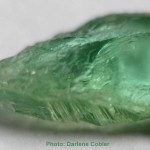
Hours 8:30 am to sunset (ranging from 5:00 p.m. in mid-winter to 7:00 p.m. in mid summer).
Open every day except for Thanksgiving (Nov – fourth Thursday), Christmas Eve and Christmas Day.
You can bring your RV and park it nearby with complete hookups. There are motels/bed and breakfast in nearby cities of Statesville, Hickory and Taylorsville. You can bring a picnic lunch or stop in one of the nearby cities for a meal.
Staff will answer questions, offer instructions and help identify gems/minerals you find.
There is also a complete lapidary shop (where they turn your finds into jewelry and beautiful cut stones).
Other things to do- DO NOT PICK THE WILD FLOWERS.
- Breathtaking scenic views
- Abundant wildlife
- Walks/hiking and nature at it’s best.
- Year round- Children’s activities
- Free parking
- Gift/retail shop
- Picnic area
- Rental equipment
- Guided tours
- Rustic mining town atmosphere
- Splashing in the cool stream during the hot summer
Picture of sluicing from— http://www.bestsmalltownamerica.com/

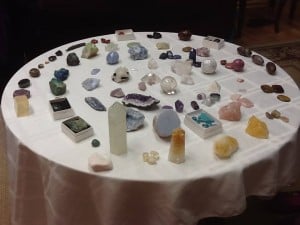
 Largest Emerald Found (CBS news)
Largest Emerald Found (CBS news)
Sluicing, Creeking, and Digging
Sluicing Permit- $5.00- most popular and easiest. Have a seat on covered sluiceway and wash buckets of ore to find gemstones. Additional buckets range from $5.00 to $1000.00. Variety of buckets to choose from such as the “Super Bucket- 5 gallon enriched bucket for $15.00
Creeking- Sluicing/Creeking Permit)- $10.00 Cutting through the rich ridges of the mine there are sparkling clean, clear , mountain waters called creeks.
Digging: Combination Permit- $20.00. Digging is hard work but motherlode finds are made chasing veins.
Creek Screen and Hand Shovel- $2.00 more with a $5.00 deposit for set $3.00 refunded upon return of tools.
Digging Tools- $5.00 set- $10.00 deposit- $5.00 refunded upon return of tools.
Check out their official website here for more details.
Castles, Castles Do you have one?
We decided to do some inquiry learning and investigate castles around the world. We need your help to learn about special castles in your area. Please help us out by answering some of our questions.
- Where is your special castle located? Continent/Country/City
- When was it built? How old is it?
- Why was it built?
- Who lived in the castle? Does anyone still live there?
- Is it used for other purposes now?
- Do you have more than one castle within 25 miles of your school/home? or even 50, 75, 100 miles away. Tell us about that one also.
- How many rooms in your castle? Where there unusual rooms in the castle?
- What is your castle built with? Describe the outside of the castle.
- Does your castle have a drawbridge?
- Is the castle built in the city, a small town or rural area? Why do you think this was a good spot for the castle? Tell us about the land features around the castle.
- Describe the inside of the castle.
- Does it cost to visit the castle if it’s open for public viewing?
North Carolina- Asheville 35° 32′ 22.74″ N, 82° 33′ 3.42″ W 35.53965, -82.55095
Biltmore Estate is a large private estate in the Blue Ridge Mountains, Asheville, North Carolina. Tourist pay to go see it throughout the year. It was built between 1889 and 1895 in a Chateauesque-style. It is the largest privately owned home and is owned by a descendant of the Vanderbilt’s. It is 178,926 square feet of floor space and 135,280 square feet of living area. It was built by George Washington Vanderbilt II and is on the US National Register of Historic Places and Landmarks. Richard Morris Hunt was the building architect and Frederick Law Olmsted was the landscape architect. Vanderbilt’s estate was modeled after two other impressive houses. One of these was a manor in Buckinghamshire, England called the Waddesdon Manor. The other was Chateau de Blois in the Loire Valley in France.
Vanderbilt wanted his home to follow the traditional agrarian model, which included a main manor house with tenant farms, a small town, a church, and a school. He put so much work into the building process because he wanted the estate to be self-sustaining and produce its own income. It had its own herds of sheep, swine, poultry, dairy herd, gardens, and nurseries. An on-site kiln produced up to 32,000 bricks daily, and a woodworking factory supplied oak and walnut for the house’s floors and walls. Indiana limestone, Italian marble and other supplies were shipped into Asheville by rail. Inside, the house is distinctively English. The country estates of Knole, Hatfield House and Haddon Hall provided guidance for the design of the interiors while they found inspiration for the house’s exterior in the 16th-century chateaux of Loire Valley, France. The stair tower and steeply pitched roof line were inspired by three specific chateaux: Blois, Chenonceau and Chambord.
Biltmore has four acres of floor space and a total of 250 rooms in the house including 33 bedrooms for family and guests, 43 bathrooms, 65 fireplaces and three kitchens. There are four floors and a basement area that had a swimming pool, gym and bowling alley. At Christmas they decorate with around 15,000 strings of lights and 41 decorated trees for visitors. During spring they have the Festival of Flowers when the gardens are blooming with over 100,000 different colors of tulips. During summer many roses and other plants bloom. The Biltmore house is the largest home on the property but there are other buildings on the Estate. There are 125,000 acres around the estate area.
The name Biltmore comes from Holland and England not their names. “Bilt” is a region that belongs to the Vanderbilt family in Holland and “more” refers to the countryside that is quite hilly in Old English terms. The area of Asheville is in the mountains of North Carolina and the Biltmore Estate is hilly.
The Vanderbilt’s wanted to help others so in 1889 the Vanderbilt’s took considerable pleasure in founding the Biltmore Forest School, the first institute for scientific forestry in America. George and Edith also founded Biltmore Estate Industries in 1901, for the purpose of creating an apprenticeship program to teach traditional crafts such as weaving and woodworking. Students enjoyed creating many things, including reproductions of furnishings within the mansion and were encouraged to sell their works for income.
George and Edith’s only child, Cornelia (1900-1976) was married at the All Soul’s Church in Biltmore Village in 1924 to the honorable John Francis Amherst Cecil (1890-1954). Cecil was a descendant of Lord Burghley, the Lord High Treasurer to Queen Elizabeth I.
Boyd, Louise. dsc01641.jpg. June 2004. Pics4Learning. 18 Feb 2015 <http://pics.tech4learning.com>
Students Learn about Scotland
Second grade students in Mrs. Harlow’s class had a special visitor on Friday, November 7 from another continent. As a VIF teacher, Mrs. Harlow is lucky enough to meet people from all over the world. The special visitor, Mr. Lannagan is from Scotland which borders the country England where Mrs. Harlow was born and raised. The two countries, along with Wales, make up Great Britain. Mr. Lannagan shared many interesting facts with the boys and girls.
To begin with he read a story called, “The Gruffalo” written by a popular British author, Julia Donaldson. The children knew the story written in English but Mr. Lannagan brought along the Scottish version and although they speak English in Scotland their dialect is very different. The children had a blast trying to figure out the meaning of some of the words as he shared the story with them. Did you know “mucked” is a Scottish word for “big”? This surprised everyone!
Mr. Lannagan shared the Scottish flag and talked about how it is a part in the British flag. The children asked questions about life in school in Scotland and what the country looks like.
The children were very excited the minute they saw Mr. Lannagan because of his special clothes. He wore a kilt and his sporran (used like a wallet where a kilt has no pockets). He shared with us the special times he would wear this and the traditions involved.
We love to learn about other cultures at Rocky River and this was a great experience for children and staff!
This is the second time that students at Rocky River have had a chance to hear Julia Donaldson’s stories. A few years ago we did a study of her books and compared our favorites with A Room with a View in Middleham. What are your favorites? Do you know of other authors that children love around the world?
International Literacy Day
Students at Rocky River Elementary were invited to design a bookmark about their favorite book in support of International Literacy Day on September 8th. This day was created by the United Nations to support the importance of literacy to individuals, communities, and societies around the world. Literacy is a human right, a tool of personal empowerment and a means for social and human development. Educational opportunities depend on literacy. Winners of the contest had the opportunity to pick a book to continue their journey of becoming a lifelong reader.

The heart of basic education for all is with literacy, and is essential for reducing poverty, reducing child mortality, curbing population growth, achieving gender equality and ensuring sustainable development, peace and democracy.
Literacy is the basis for lifelong learning.
Education is a basic human right, and one that remains unfilled for many children around the world. Accessing and resourcing schools is most challenging in the developing world. Plan on joining the world wide effort to support literacy with all children and families no matter where they may live.
We encourage each student and family at RYRES to shoot for the stars by building a literacy habit which takes just a little time each day. Take time each and every day to include literacy in your life.
Several students did just that over their summer break when they kept reading in their summer plans by joining the Scholastic Summer Reading Challenge. Mrs. Shulman and 30 students who read the most minutes during the summer challenge celebrated their accomplishments with a pizza party on Monday September 22.
What will your goals be each week that include literacy in your life and for others around the world and in our community?
Not enough information?
We did further investigation and can tell you that we didn’t give enough information as to our location. With so many Rocky River schools we decided you would need to know the county since they all were in different counties. We are located in Union County. Warning…… Be careful though there is an Union County, North Carolina and South Carolina.
We are located in one of the 100 counties in North Carolina. Virginia is to the north, Tennessee is to the west and South Carolina is to the south. Georgia is the fourth state that borders us to the southwest.
More about our location.. Locate us on google maps. Hints…… Look for Monroe, North Carolina, Union County or Rocky River Elementary School
- Did you find us?
- What can you tell us about the area we live in from google maps?
- Is it rural, suburban or urban? What do you see nearby?
- Are we close to the ocean?
There are 3 regions Mountains, Piedmont and Coastal Plains. We are learning about the mountain region now. Can you find the answers to these questions? If so let us know.
- How does our mountain region compare to other places in the world?
- What can you do there?
- What places can you see?
- What are the names of our oldest river, highest mountain, and highest waterfall?
- Why did the early settlers settle in the mountain region?
- Where did they come from originally?
- What makes the mountains of NC a tourist destination for world travelers?
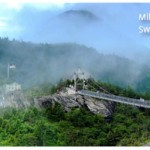
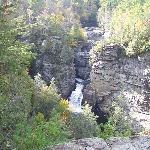


Where Are You?`
We started our year off learning about where we fit into the world. Think about your relative location in the world, country or state and tell us how to locate you. First we started small
This is where we were at the moment….
But there was a problem with telling that to others.
They wouldn’t be able to find us just from this answer.
So we decided to think a little bigger. We decided that we were…….
2. At Rocky River Elementary School 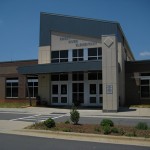
Can you find us yet?
We decided to do a google search for Rocky River Elementary School.
Once again there was a problem. We found several Rocky River Schools. 3 of them were elementary schools and one high school so were decided to mark the high school one off. We started looking at addressess of each of the schools.
10505 Clear Creek Commerce Dr
Charlotte, NC
500 N Rocky River Rd
Monroe, NC
5454 Rocky River Rd
Concord, NC
Rocky River Elementary School
483 Rocky River Rd
Mooresville, NC 28115 (Iredell County)
We decided this wouldn’t help you know where we are.
What would help you figure out which one we are?
Where Are WE?
On Monday, August 18, teachers report to their classrooms to set up and have meetings before the students arrive the following Monday, August 25th. Check back with us soon to see where out learning takes us this school year!
- Do you know where North Carolina is?
- Do you know what country it is in?
- What continent it is on?
- What two oceans border the country it is in?
- How did the early explorers and settlers use the 7 habits as they came to NC?
Join us as we explore our home state NC the first few weeks of school before we take off on our global journeys of the year. These images will help you figure our the 3 regions.
Independence Day- July 4, 2014
Fireworks, Sparkle, Boom, Loud Red, White and Blue Stars and Stripes Music/patriotic songs/ loud noises celebrations. parades, speeches, cookouts hot dogs/hamburgers. potato salad. macaroni salad, chips, Soda/soft drinks/lemonade/tea watermelons/blueberries, lakes, boats ocean/seas/hurricane Arthur wind and rain/waves crashing over the islands ants/bugs. playing chase fireflies at night. lights in the sky. sparkling in the dark night.
Soda/soft drinks/lemonade/tea watermelons/blueberries, lakes, boats ocean/seas/hurricane Arthur wind and rain/waves crashing over the islands ants/bugs. playing chase fireflies at night. lights in the sky. sparkling in the dark night.
freedom all reminders of a country celebrating! Independence Day!
What other countries celebrate the Fourth of July? 
Denmark, England, Norway, Portugal and Sweden. Denmark Danes and Norwegians celebrate American Independence Day because thousands emigrated to the U.S. in the early 1900s. Other European countries, like England, Portugal and Sweden, hold celebrations near American military bases and or spots frequented by American tourists to boost travel during early July.
World Water Day -March 22nd
Second grade recently taught the school all about Water and why it’s so important to everyone around the world. They made poster for the halls and did a movie for the morning broadcast.


